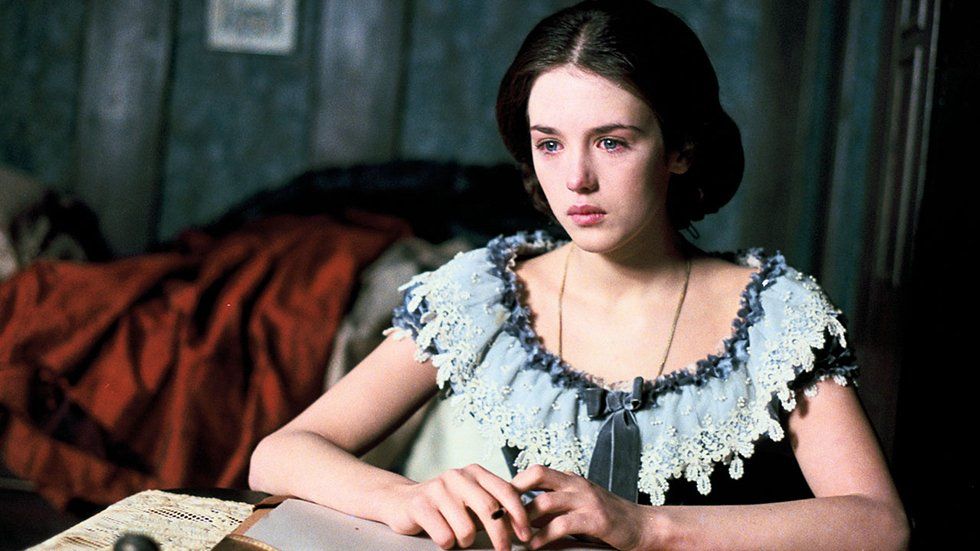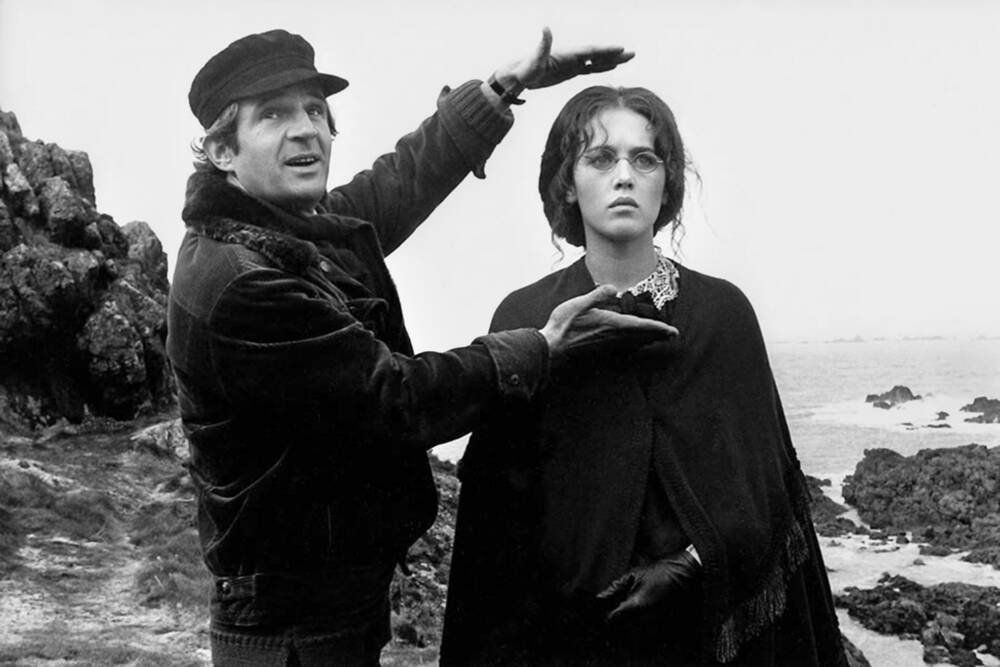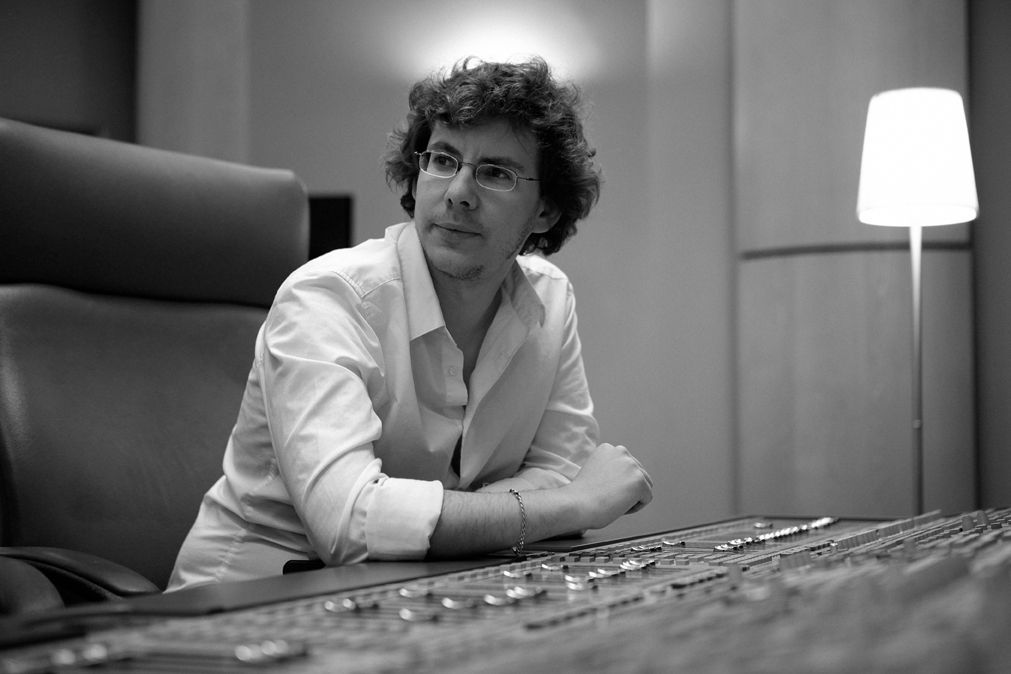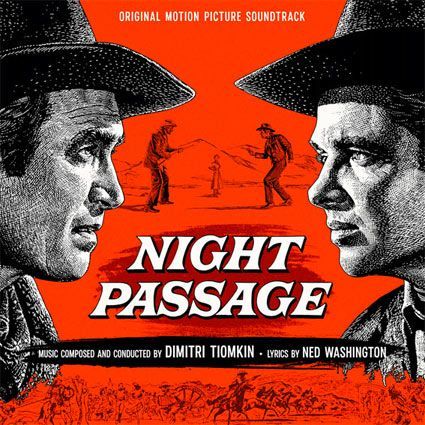Maurice Jaubert and François Truffaut

Musical Continuities from L’Atalante to L’Histoire D’Adele H
Copyright © 1980 by Annette Insdorf / Reprinted by permission of Georges Borchardt, Inc.
When one thinks of the films of François Truffaut - especially L’Histoire d’Adèle H. - in relation to the other arts, the form that generally comes to mind is literature, for Truffaut has emerged as the most “literary” director of the Nouvelle Vague. This is not only because he adapts novels (like Jules et Jim), or makes films about literature (such as Fahrenheit 451), or because he is drawn to voice-over commentary (as in L’Enfant sauvage), it is also that his characters and mise-en-scène are self-consciously concerned with language. Truffaut’s protagonists are constantly turning themselves into books, whether literally in Fahrenheit 451, more subtly in L’homme qui aimait les femmes and Les Deux Anglaises et le Continent in which the male characters write autobiographical novels, or implicitly in L’Enfant sauvage and Une Belle Fille comme moi. In fact, Les Deux Anglaises, desire for “presence,” a concept which is not specific to the cinematic ultimately explorations of the creative process - especially the written word - in the search for identity: they seem to be as much about the transcription or transmutation of experience into text as about the affective fluctuations of the characters.
However, in addition to literature, music has played a tremendous part in Truffaut’s work, but a part which tends to be so well integrated into the films that it is rarely set aside for specialized study. Critical emphasis has tended to fall on his visual allusiveness, as in the early films that are filled with “quotations” from his beloved films of the past. Ever the critic and historian who began his film career by writing for
Cahiers du Cinéma, Truffaut would build into the fabric of his quirky films (such as
Tirez sur le pianiste) an awareness of cinematic continuities. For example,
Les 400 Coups “quotes” scenes from the work of Jean Vigo: the boys running with the gym teacher call back to
Zéro de conduite; Antoine running at the edge of the sea recalls L’Atalante. Recently, however, Truffaut’s work has extended this allusiveness from the visual image to the soundtrack by resurrecting the music of Vigo’s films.
L’Histoire d’Adèle H. is one of the most interesting examples because - while in most films, the shooting precedes the composition of the score - here the music was all written before any shooting began. In fact, it was written in the 1930s by one of the greatest composers of French film music, Maurice Jaubert. He is probably best known to film enthusiasts for his scores for Vigo and Marcel Carné; he was certainly known to Truffaut as such, for this cinéphile used to memorize the soundtracks to favorite films, among which Zéro de conduite and Atalante always occupied a significant place. Thus, if his films about children, especially Les Mistons, Les 400 Coups, and L'Argent de poche, are to some extent an homage to Vigo, Adèle H. begins his homage to Vigo’s composer. Begins, because all of Truffaut’s films from 1975 to 1978 - L’Argent de poche, L’Homme qui aimait les femmes, La Chambre verte - have continued this process of adapting Jaubert’s music to new cinematic contexts. (1) This has proven most effective in Adèle H., for which all the music was recorded one month before shooting commenced. Truffaut thus directed Isabelle Adjani and the film not only from a literary blueprint that originated in the actual diary of the daughter of Victor Hugo, but from a musical one that originated in the soundtrack of L’Atalante and other films.
Music in film is of course a difficult thing to appreciate because it must be functional, it is one art form in the service of another, instead of existing in its own terms. However, Jaubert’s scores - like those of Bernard Herrmann, Georges Delerue, Max Steiner and many others - have transcended their function in films and become worthy of respect independent of the images they accompanied. A deeper understanding of the significance of Jaubert’s music in Adèle H. requires an introduction to his career, especially those aspects that make him particularly compatible for Truffaut. (2)
Maurice Jaubert was born in 1900 in Nice, and some critics have attributed his success as a “mélodiste” to his Mediterranean origins. At the age of nineteen, he was the youngest lawyer in France - but always close to his piano. He began writing about music (in a way similar to Truffaut who was a critic before becoming a director); he became friendly with Ravel and Honegger, and finally turned to composing in the 1920s. His introduction to the cinéma came in 1926 when Jean Renoir asked him to do the musical selection for Nana. This was not their only collaboration, for a few years later Renoir, Jaubert, and Alberto Cavalcanti put together Le Petit Chaperon rouge: the composer was given total freedom to express his musical fantasies, resulting in a film that has been called Perrault re-seen by Mack Sennett.
His first great symphonic work, “Le Jour,” brought reviews that ascribed to his style qualities that suggest Truffaut’s films, namely warmth, generosity, color, and “a sense of equilibrium.” In fact, the reviews of his subsequent compositions also sound like reviews of Truffaut’s recent work: “Maurice Jaubert is not embarrassed by the frames of the past,” (3)… “but the harmonic language is guided by a renovated syntax”; (4) or, “his music is simple without banality, expressive without grandiloquence, intelligently written without pedantry.” (5) Or most relevant, “We are in the presence of sane, vigorous and authentically popular art”. (6) “This music tells the truth, brutal sometimes, but which reveals such a human presence that it imposes its language on you and makes you share its faith.” (7)
In 1932, while working at the Joinville Studios, Jaubert peeked at some rushes. They interested him to the extent that he asked the people inside if they needed a musician. These were the Prévert brothers (making
L'Affaire est dans le sac) and thus began an artistic collaboration that would grow until the war, as Jacques and Pierre Prévert were the screenwriters of such classic films as
Les Enfants du paradis,
Le Jour se lève, and
Les Visiteurs du soir. Jaubert’s connections to cinema throughout the early thirties were strong, as he composed for Cavalcanti, Jean Painlevé (Le Bernard-l'hermite), Belgian director Henri Storck, and René Clair (Quatorze Juillet in 1932 and
Le Dernier Milliardaire in 1934). Perhaps most memorable were his scores for Vigo -
Zéro de conduite in 1933 and L'Atalante in 1934.
For
Zéro de conduite, Jaubert expanded the possibilities of music in film, as he wanted to create a musical equivalent for visual fantasy or for the poetic distortions of this film. He therefore wrote a theme which he had the orchestra play and record in reverse, beginning with the last note, and then turned it around again during the editing. This placed the notes in the right order, but reversed their emission so that the effect was one of the notes’ apparition rather than attack. Jaubert was thus already experimenting with the expressive possibilities of film music in the sense of mechanical innovation. He thereby fulfilled an article that he had written a few years earlier in which he announced the
creative rather than reproductive power of the phonograph. This manifesto is remarkably similar to articles that Truffaut wrote as a critic for
Cahiers du Cinéma, where he attacked the commercially dominated French film industry that limited the camera to a recording object - a slave to famous stars and lavish sets - while he praised the
auteurs like Renoir and Hitchcock who explored the creative power of the camera and thus expanded the vocabulary of film. Jaubert’s hopes for his music are of course fulfilled in a sense by
Adèle H., since his compositions are the aesthetic foundation rather than merely accompaniment: they engender the image rather than follow it.
Jaubert went on to compose many scores in 1935. Merely in the film arena, he was responsible for the music of La Vie parisienne directed by Robert Siodmak, Mayerling directed by Anatole Litvak, and a few scores for Henri Storck. It was also the year of Giraudoux’s play, La Guerre de Troie n'aura pas lieu, for which Jaubert reconstituted the past with unusual instruments, oppositions of rhythm, and ancient resonances. Truffaut uses this music in Adèle H. to reconstruct the military past of Lt. Pinson’s régiment, as the selections from La Guerre de Troie accompany the scenes of army life.
More film scores followed for Jaubert, including Duvivier’s Carnet de Bal, Carné’s Drôle de drame and Quai des brumes, Jean Epstein’s Eaux-Vives, and then Carné’s Hôtel du Nord and Le Jour se lève. Between 1929 and 1939, he wrote 38 film scores, as well as a variety of other musical compositions. In 1936, he wrote and conducted “Jeanne d’Arc,” a symphony for soprano and orchestra, based on a text by Charles Péguy. Rather than merely illustrating the words, the music was recognized as creating its own meaning, defined by one critic as having an “appropriately archaic color.” Perhaps this notion of orchestrating one female voice amid all the instruments prepares - at least spiritually - for the use of his music in Adèle H., which can also be seen as a female voice cinematically orchestrated. In Péguy’s internalized drama, Jeanne yields to her solitude: there are no outer dramas, voices from heaven, trial or execution. The action is self-contained, and voice is her only outlet - as will be the case in Truffaut’s film.

At approximately the same time, Jaubert created the soundtrack that would prove most fundamental to Adèle H.: his music had the same pre-existing relationship to La Vie d’un fleuve, directed by Jean Lods, as it would have to Truffaut’s somber masterpiece. In an interview in Beaux-Arts of 1936, Jaubert explained that for this documentary about the Seine, he was able to compose a symphonic work (which later became his “Suite Française”) that would serve as the basis for the images and montage. Parts of the same music were pre-recorded for Adèle H., so that Jaubert’s work is truly a pre-text for the images. Here, he experiments with instrumentation by making the piano both a melodic and percussive instrument, and by having the winds replace the percussion section while the cellos fulfill the role of the kettledrums. It is not difficult to see why Truffaut would have been attracted to this music for Adèle H. Besides the emotional violence of the last section, the muted saxophone assumes the voice and function of a complementary instrument - there is a kind of doubling - while Adèle H. is the story of a one-way love affair. Do we not follow a woman who, when rejected, internalizes the passion and becomes both the subject and object of it? The saxophone thus becomes the voice of Adèle, the expression of her loneliness - and of her doubling, as she is the queen of and slave to her obsession.
A brief summary of the film seems appropriate here. In 1863, a young Frenchwoman arrives in Halifax in search of Lt. Pinson, a British officer stationed there. Though he once courted Adèle, her love for him proves unrequited, irrational, and obsessive; the cold and arrogant lieutenant will have nothing to do with her as she begs, threatens, bribes and embarrasses him, spying upon his nocturnal encounters with rich women, offering to sacrifice her entire existence for him. We learn that she is the younger daughter of Victor Hugo, sister of Léopoldine who drowned at the age of nineteen. Concurrent with her desperate encounters with Pinson, she writes letters filled with lies to her parents, and her “memoirs,” incessantly weaving a verbal web about herself. Through her feverish transmutation of life into literature, increasingly less connected to reality, she finally lives only to write - a woman become a book. By the time she follows Pinson to Barbados with her torn dress, wild hair, and glazed expression, she has become her own work of art. She is cared for by a native woman who then takes her back to France. The epilogue informs us that Adèle spent her next forty years in an asylum.
From the outset of the film, Adèle lies about who she is, splitting herself into a number of identifies, each one appropriate for an occasion. Her first action is a resourceful évasion of the law as she sneaks into the country by joining the line of returning residents. She later tells the notary that she is looking for Pinson for her niece who is in love with him; her kind landlady is told that he is a cousin enamored of her; she goes under the name of Miss Lewly, and later Madame Pinson. When a little boy asks her name, she answers Léopoldine; however, upon receiving her parents’ letter of consent to marry Pinson - accepting her on her own terms - she returns to tell him her name is Adèle. She then disguises herself as a man, momentarily literalizing the notion that she is truly the male
and female of the relationship, subject and object.
The split between her passion for Pinson and her internalized romantic quest is then made evident, for instead of hypnotizing the lieutenant as planned, she hypnotizes herself. Her repetition of a few words puts her in a kind of trance, as she writes and says aloud, “Je suis née de père inconnu” (“I am born of an unknown father’). Adèle feverishly convinces herself that she is not the unwanted child of the most celebrated writer in the world, and - negating genetic determinism - becomes her own parent. The Adèle of the memoirs is in fact autonomous, an intensified and permanent reflection of the woman before our eyes. The first letter she writes to her parents establishes her doubling (and repeats the shot of Muriel in
Les Deux Anglaises in a similar stance, stressing the connection between these two literary absolutists): Truffaut presents her face in the mirror, a square surface that visually encloses and “reproduces” her, while the rectangular sheet of paper in her hand does the same on a verbal level. The camera moves in to a close-up of her reflection as, fabricating a different Adèle, she lies about her relationship to Pinson. The mirror makes clear that although the letter is addressed to her parents, she is speaking to herself. We are hearing more of a soliloquy than a monologue, and this theatrical terminology is supported by Adèle’s actions and the way they are presented. She is consciously adopting a persona in a one-woman show; and on the other side of the footlights, the audience is constantly reminded of the stage. We are distanced from Adèle by the numerous frames around her.
The controlling form is the square or rectangle: Truffaut often frames the characters and events via windows (our first sustained view of Adèle is her face peering out of the carriage), doorways (the multiple framing when Pinson’s superior chastises him over the wedding announcement), mirrors, photographs, newspaper clippings, books, and letters. After showing portraits from her family album to the landlady, Adèle “poses” for the camera implicit in her mirror: at the end of two scenes, she tilts her head slightly to the angle of nineteenth-century portraiture, midway between frontal and profile. Later, she even creates her own frame/stage in constructing a shrine to her love. Flanked by flowers and two lit candies, a photograph of Pinson makes literal her claim, “Love is my religion.” This altar - a miniature stage with doors for a curtain - serves to distance us further from her as she kneels in excessive adoration. And if we have seen The 400 Blows, how can we not recall Antoine Doinel’s altar to Balzac?
The impulse for both Antoine and Adèle can be summed up in the title of the Balzac story that led the boy to worship the author:
La recherche de l’absolu (The Search for the Absolute). The curtains around Antoine’s altar caught fire, and it consumed itself; Adèle’s model will consume her. That desire for the absolute which is evident in the line she writes to Pinson, “I am your wife definitively,” cannot be sustained in the arena of daily experience; the only stages on which it can exist are art and death. Therefore, to the finality of the printed title, “Les Misérables - Victor Hugo,” which throws her into a fit of anger, or of Léopoldine’s drowning, which leaves her with recurrent nightmares, she responds with her own amalgam of their terms: she drowns in words.
It seems particularly appropriate that the music which punctuates these scenes was originally conceived for “The Life of a River,” as the image of water is so central to
Adèle H. The film begins with Adèle’s arrival in Halifax on a boat, and ends with a reprise of her standing by the waves. As the film develops, she is associated with water through her repeated nightmares of Léopoldine’s drowning. Truffaut creates this impression through the image of the ocean with its potential for “going under.” Her first nightmare is a vivid Whirlpool which we experience with her: superimposed on her tossing, turning and choking body is a sepia-toned shot of a woman drowning. Truffaut’s conjunction of the sea and language begins when she subsequently writes, “that a girl shall walk over the sea and into a New World to be with her lover - this I shall accomplish.” The declaration is accompanied by a shot of the waves behind her, establishing the ocean as the realm of the absolute and impossible.
By the second dream sequence (the same nightmare), we can sense how the sea is no less a metaphor for madness, which a part of her still resists. When she writes the letter to her parents that falsely declares her marriage to Pinson—her face and voice superimposed on a swift tracking shot of the ocean - we understand that she is literally skimming the surfaces of madness. She tells them to write to her as Madame Pinson; Adèle is about to sink, the fictitious bride is born in the water. Truffaut literalizes the final image of her “going under” when she is sleeping in the shelter for beggars. A woman in the neighboring bed tries to open Adèle’s suitcase which is on the floor between them; she awakens and slithers to the
other edge of the bed and then under it, crawling to the valise and wrapping her body around it, as she warns the woman to leave her book alone. She pulls it beneath the bed with her and goes back to sleep.
By the third nightmare, now in Barbados, we see only the outward manifestation of her turmoil. Truffaut does not permit us to participate in this one for she has slipped farther away from us. We are increasingly distanced from her in this final episode; from the closeups of the early sequences, she is now seen in long shot, a dark figure drifting through narrow streets. We are cut off from her consciousness,
except for the music: Jaubert’s score from a Belgian documentary,
Ile de Pâques (1935), with the island expressed by rhythmic turbulence as though waves were about to take it over. This violent music is used when she gets to Barbados and succumbs to madness, corresponding to the explosion of sun and color in this otherwise muted, brown-toned film.
The music that prepares for and develops her isolation brings us back to Vigo’s
L’Atalante (about which Truffaut once wrote that it combines the two great tendencies of cinéma, “realism and aestheticism”). Jaubert’s original score lasts no more than fifteen minutes, divided into ten sections, but it is one of the most haunting in film history. In this film, music is a narrative device rather than an ornament, as it often originates and functions within the story. This begins in the first scene, the wedding of Jean and Juliette, since we see the accordion that is playing a melody which will recur throughout. They go to live on his boat, “L’Atalante,” along with père Jules (played by the inimitable Michel Simon). But Juliette dreams of the big city and yearns to go to Paris. Tempted by a young peddler/magician - and by his song - she leaves the barge. Once on land, her bag is stolen, and she wanders around the city forlorn. Meanwhile, Jean’s misery troubles père Jules who goes to find her. It is the music which brings about the dénouement, as she works in an arcade and puts on a record of the sailors’ song that we have been hearing throughout the film. This alerts Jules to her presence and leads to her rescue.
Jaubert structured the soundtrack with two main themes. The first is the sailors’ song which we hear at the wedding, again as they dance at the restaurant, and which becomes transformed into the peddler’s song. It is introduced in the credit sequence, during which we also hear (in counterpoint) the second melody, played by the winds: this will become the love theme, usually played by the saxophone. The love theme also grows out of events within the frame: when Jean first shows Juliette the barge and turns on the motor, the music develops from the sound of the motor. The tempo is thus determined by the rhythm within the shot. Then the saxophone enters with a tender phrase which accompanies the gliding of the barge, followed by the blending in of the sailors’ song, played by the winds while the love theme is taken over by the violins.
Later, père Jules is in his cabin which is loaded with bric-a-brac and he takes a record and runs his finger around it: we hear music - a waltz. He stops turning and the music stops. He tries again and the waltz returns. After another attempt with the same result, the music continues when he takes his hand away and we suddenly discover that the cabin boy was playing the accordion. This playful interdependence of image and soundtrack is developed in the long musical sequence of the lovers’ separation. Père Jules puts a record on his gramophone and we hear the waltz. In the background, Jean jumps in the ocean, for Juliette had told him that if you keep your eyes open under water, you can see your love. The song on the record continues during the underwater scene of Jean’s search, and seems to engender the superimposition of Juliette floating in her bridal gown. Jean returns on board; the waltz continues on the gramophone but with a new tonality. This prepares for the shift to Juliette who is shown searching for the barge.
The music becomes the link between the tormented lovers, who must go to bed in separate places. The dissolves from Jean to Juliette and back are heightened by this music of frustrated desire, of solitude and impossible love. It contains the interlacing of the two melodies of the film, almost as though the soundtrack substitutes the contact of sounds for the contact of bodies. This musical overlap fulfills Jaubert’s claim,
It is the role of film music to feel the precise moment when the image abandons its profound reality and entreats the poetic prolonging by the music.
At the end of the film, we hear this music again, as a woman’s voice hums the sailors’ song. The sound is accompanied by a swift tracking shot of the water, so that the voice of desire now flows with the barge.
Truffaut uses this music, which in
L'Atalante signifies a number of things - wedding, love, separation / desire, and resolution - mainly in its third meaning: the suffering of love, the image of the individual tossing in bed because the object of desire is far away. And the conjunction of this music with water is recreated in
Adèle H., but in a far less optimistic manner. The theme that accompanied Jean’s searching under water for his love is like a counterpoint to Adèle walking on the water while drowning in words. She addresses us from the ocean as the dream-self made real, triumphantly claiming that she will walk on the water into the New Land. The New Land is finally an inner space, sublime and impossible, whose roads are paved with words. Like Muriel in
Les Deux Anglaises, Adèle transmutes experience into a diary which expresses her yearning for the permanent (the word) over the provisional, the spiritual over the physical, and sustained suffering over temporary pleasure. Out of her loneliness and anguish, she creates a self which is finally impervious to the man she loved.
Truffaut’s statement that “the idea was to make a film about love involving only one person” points to the ultimate isolation - the refusal of empathy - that Adèle demands. He adds that “the second idea was to make a film that had a maximum of inner violence. Emotional violence.” These two intentions are well fulfilled by Jaubert’s music, with its lonely saxophone doubling Adèle’s voice, its entwined themes from
L'Atalante blending the two people
within Adèle so that the love affair is self-contained - an internalized romantic quest, and then the water-connected music with its turbulent fluctuations.
For those who were familiar with
L’Atalante and its melodies, Jaubert’s music not only serves the obvious dramatic functions in
Adèle H.; it adds to the film another level of appreciation - a temporal layer which renders the film more complex. Visually
Adèle H. recreates the past of “actuality” which comes to us through the written word: the careful framing, composition and lighting recall the late nineteenth century of letters and diaries. Musically, the film recreates the past of cinema, the 1930s of “poetic realism,” of visual and oral harmonies which affected Truffaut so deeply as a child of the thirties who was addicted to films. This counterpoint between the literary and the cinematic, picture and sound, the pre-existing text and the created moving image, is at the heart of all of Truffaut’s work: this is a director for whom books and films have always been more “real” than actual events, more intimately connected than one might suppose, and for whom the past seems to be more vivid - or at least more aesthetically rich - than the present. In other words, Truffaut’s films are all concerned with forms of continuity, with characters who constantly project themselves into the past and/or future - like Bertrand of
L’homme qui aimait les femmes, recollecting his amorous experiences to shape them into a text that will define and outlive him.
La Chambre verte (adapted from Henry James) develops this tension, since it centers on a man (played by Truffaut) who is obsessed with the dead. In particular, he is unable to forget the woman he loved who died just after they were married, unable to adjust to the present, incapable of living without his memories. He creates a mammoth altar to commemorate her, as well as others who were close to him. Maurice Jaubert is one of the dead for whom Truffaut literally lights candles in this film (he was killed in 1940 - one of the few Frenchmen who died in military action). During a climactic scene at the altar, filled with burning candles and photographs to retain the living presence of these departed, Truffaut stops before a picture of a young man conducting an orchestra. He explains to his companion that upon hearing this man’s compositions, “I realized that his music full of clarity and sunshine would be the best to accompany the memory of all these dead.” The subsequent close-up of this photo of Jaubert includes the reflection of numerous candles - a muted explosion of light against glass, rhyming with the soaring soundtrack.
Jaubert’s music - mostly the “Concert Flamand” of 1936 - frames
La Chambre verte, underscoring that Truffaut is the most nostalgic of the New Wave directors, and the most classical. His insistence upon incorporating the music of 1930s cinema establishes him all the more firmly in an older tradition - the French lyrical tradition that boasts Renoir, Carné, and Vigo.
- The album of Jaubert’s music for Truffaut’s films is on the Emi/Pathé Marconi label (30 cm, no C 066-14567).
- For much of the following material, this paper owes an enormous debt to
François Porcile, who not only arranged Jaubert’s musical sélections for Adèle H., but wrote the first appraisals of Jaubert’s overall contribution to film music. - Paul le Flem, Comoedia, 4 mai 1936.
- Maurice Imbert, Le Débats, 4 mai 1936.
- Roland Miniot, Le Département, 2 juillet 1943.
- Robert Bernard, Les Nouveaux Temps. 11 juillet 1943.
- Louis Beydts, Aujourd’hui. 30 juin 1943



